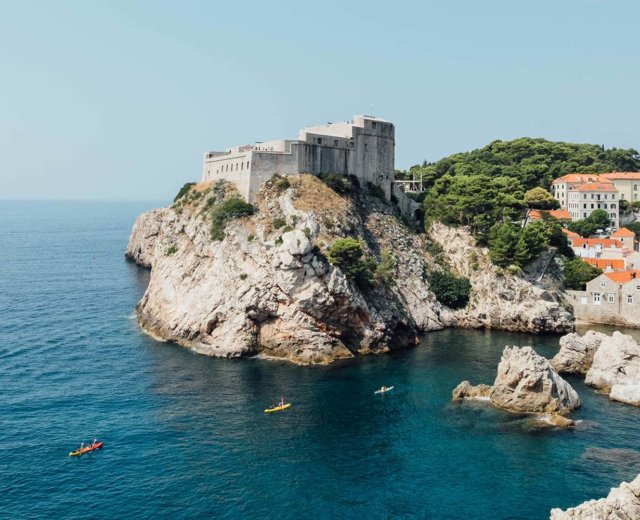Iceland travel: everything you need to know
Stevie Keen
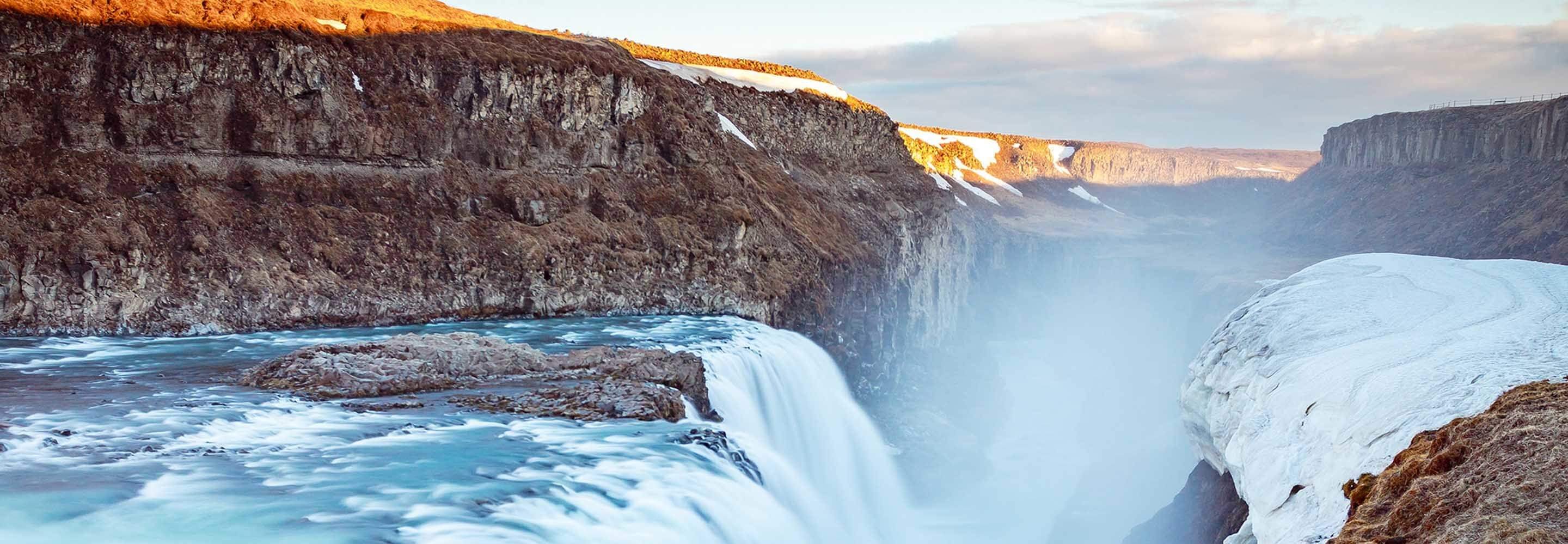
Want to travel to Iceland? Here’s when, where and why to visit a land of colossal natural wonders
Captivating soaring numbers of visitors with relaxing hot springs, fiery volcanoes and the breathtaking Northern Lights, visiting Iceland is understandably topping bucket lists for travellers around the world.
If you’re thinking about experiencing the midnight sun for yourself or trekking across glittering glaciers by taking a trip to Iceland, it’s worth making sure you know a few tips about the best places to go, when to see the Northern Lights and the best time to visit Iceland so you don’t miss out on the gems this country has to offer.
But first, a quick overview.
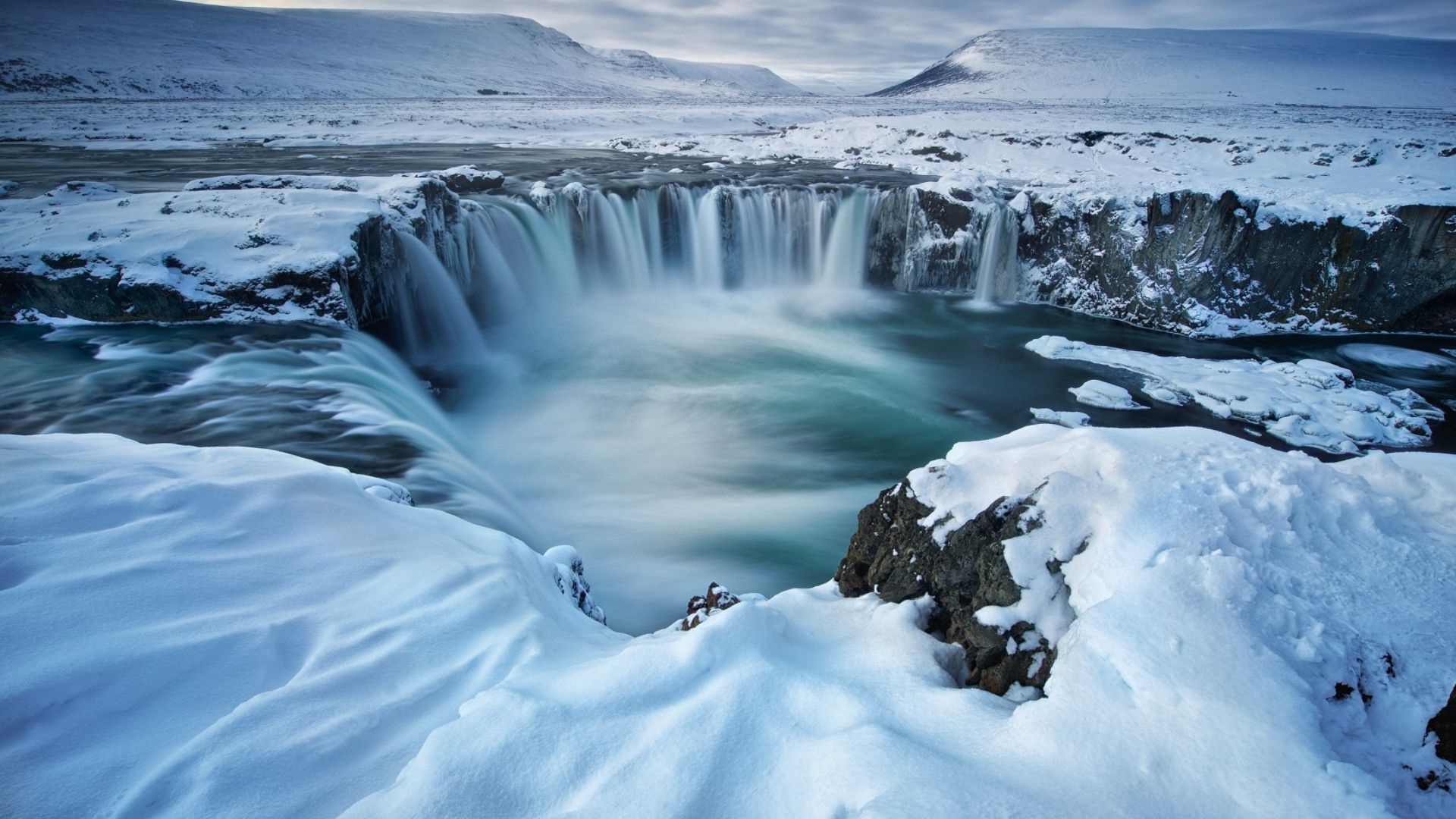
Iceland’s volcanic history gives some areas a prehistoric feel and has long wooed adventure-lovers. Vast swathes of rocky land stretch out for miles before you see any sign of life. Take on a frozen wilderness hike, navigating glacial crevices, or toast your toes in bubbling geothermal pools – Iceland’s natural attractions are vast and varied.
If wild Iceland isn’t your thing, it’s worth knowing that its natural attractions are far from its only draw. The number of museums and galleries is mind-boggling given the country’s small population of 320,000. Even the remotest of fishing villages have at least some public place dedicated to national heritage or the arts.
When is the best time to visit Iceland?
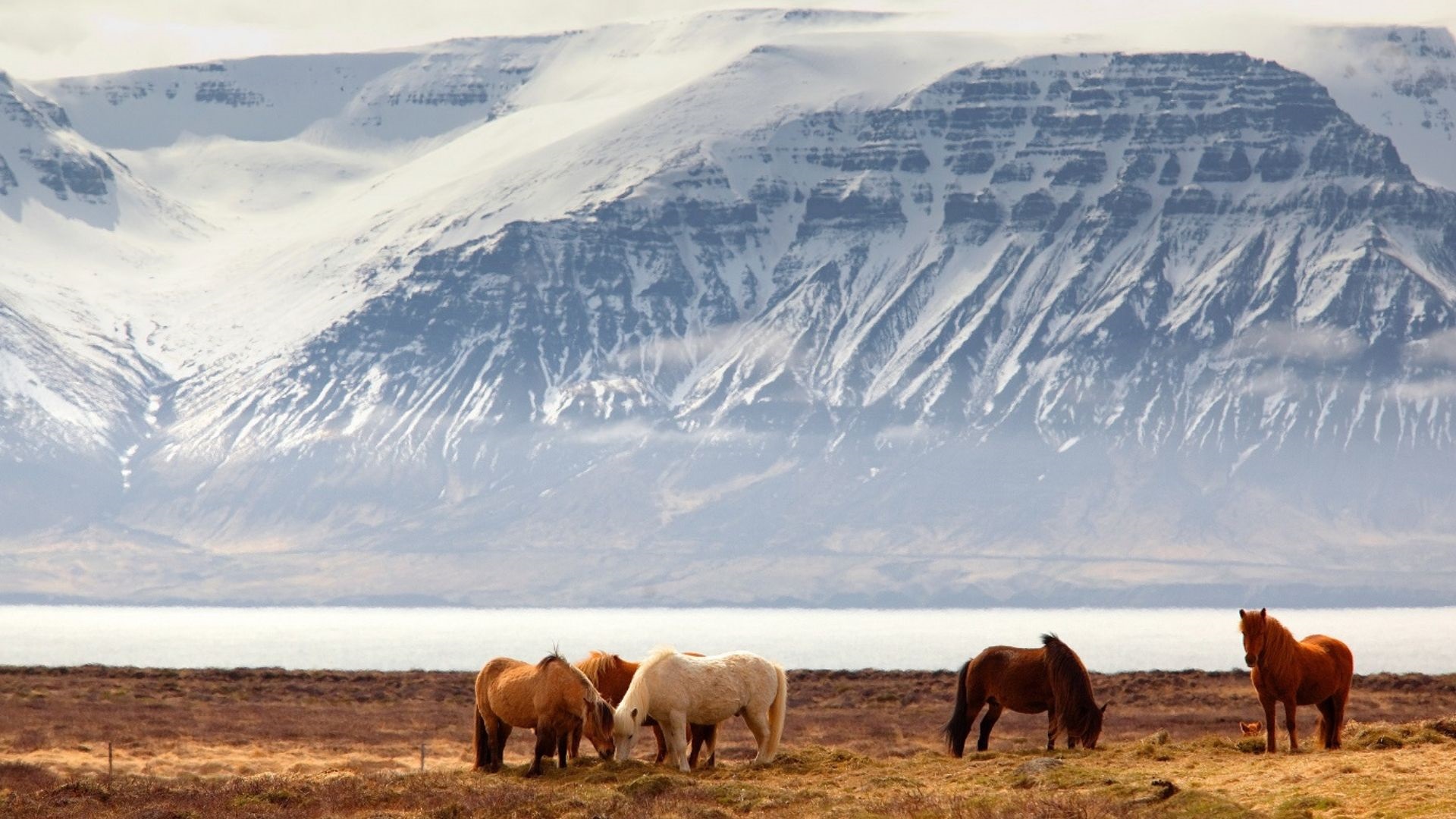
The best time to visit Iceland if you’re not a huge fan of cold weather is during the summer season, specifically July and August, when the average temperature lurks somewhere between 10 and 15 degrees Celsius. However, it is the peak time for tourists so expect crowds at popular spots.
June is also popular with tourists thanks to the 24 hours of daylight, which allows you the chance to experience the weirdness that is sunshine at midnight. Weather-wise, Iceland is a fickle beast so don’t ditch your jacket and jumpers if you’re travelling there in the summer. Experiencing four seasons in one day isn’t exactly uncommon.
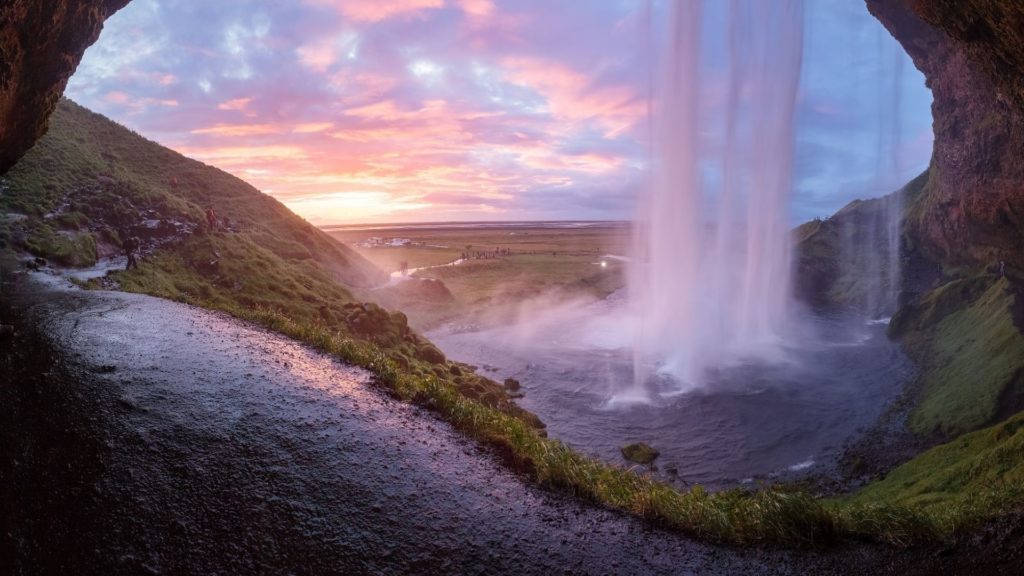
The geothermal spas are a huge tourist draw, so if you’re looking for the best time to visit the Blue Lagoon, wait until September for the crowds to thin out a bit. The pools are a little less relaxing if you have to jostle for a spot.
Visiting Iceland in winter is for the adventurers out there. Trawl the ice fields and explore the caves, but grab plenty of layers and prepare for all scenarios, even if you’re just popping to the shops. That changeable weather can sneak up on you. In December, days can have as little as four hours of daylight, which can make getting up and going in the morning difficult, but comes with the benefit of soft, dreamy light all day long as well as two hour-long sunrises and sunsets.
What is Iceland known for?
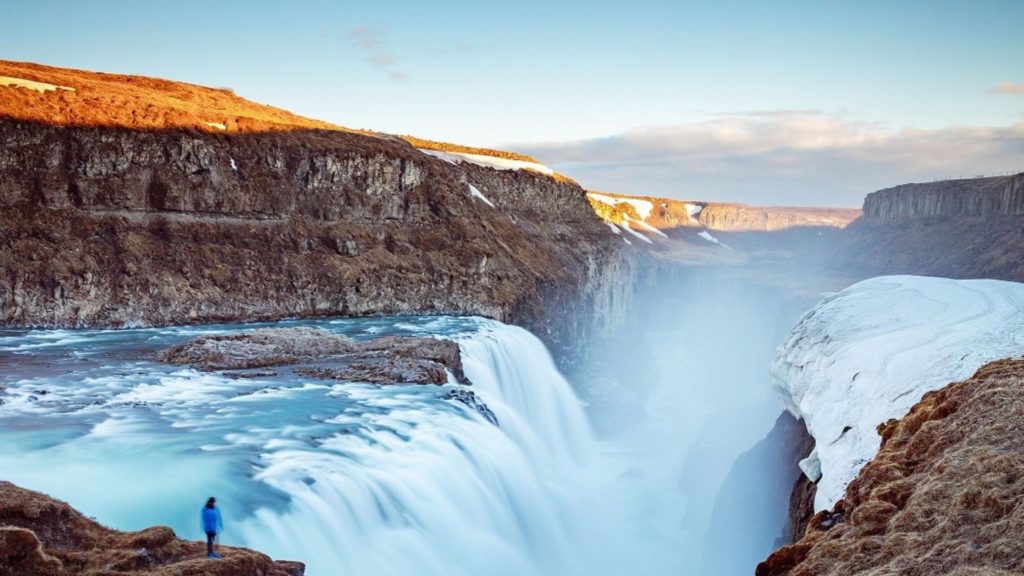
Often called ‘The Land of Fire and Ice’, Iceland is known for being home to some of the largest glaciers in Europe as well as active volcanoes. While its nature may run hot and cold, the world’s love for this island’s stunning landscapes doesn’t; Iceland’s breathtaking vistas make it a top pick for travellers.
Iceland’s inhabitants are well-versed in daylight extremes, too. From 24 hour daylight in the summer to just four hours of sun in the depths of winter, Iceland is also rightly known as the land of light and darkness.
Read more: Explore Flash Pack’s summer and winter Iceland trips
When it comes to the food that Iceland is known for, you might recall something about fermented shark. No self-respecting local would eat fermented shark; it’s a remnant of a much tougher time in history where both fish and food preservation techniques were essential. But there will be places you can try it (although now fermented in vinegar, not urine). However, fish is still incredibly important to Icelanders’ diet and a huge economic driver. If you want to try a more palatable local delicacy, dive into a plate of langoustines. Locals devour them by the shipful.
When is the best time to see the Northern Lights in Iceland?
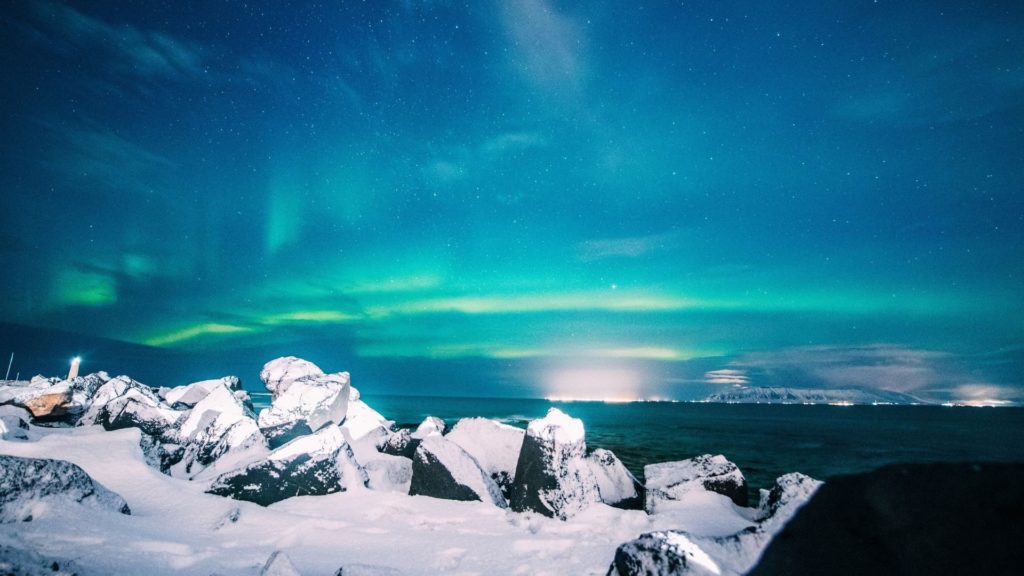
The best time to see the Northern Lights is between late August and mid-April. Iceland’s high-latitude means that outside of this window there is an essential element missing; total darkness. It’s not that unusual to see the lights as early as mid-August, once the last of the midnight sun has disappeared.
Read more: Why Norway is a dream destination for first-time solo travellers
Between the months of November and February, you will find the darkest and longest nights, but they can also be the worst for weather. Lashings of rain and snow can really put dampers on the magic of the Aurora Borealis.
Seeing the Northern Lights is never a sure thing. Guides can help find favourable weather and pick the most picturesque spots, but the longer your trip, the greater your chances of catching a glorious show. They tend to be active for a few days, before dying down for four to five days, so a longer trip increases your odds of a sighting.
Where is the best place to see the Northern Lights in Iceland?
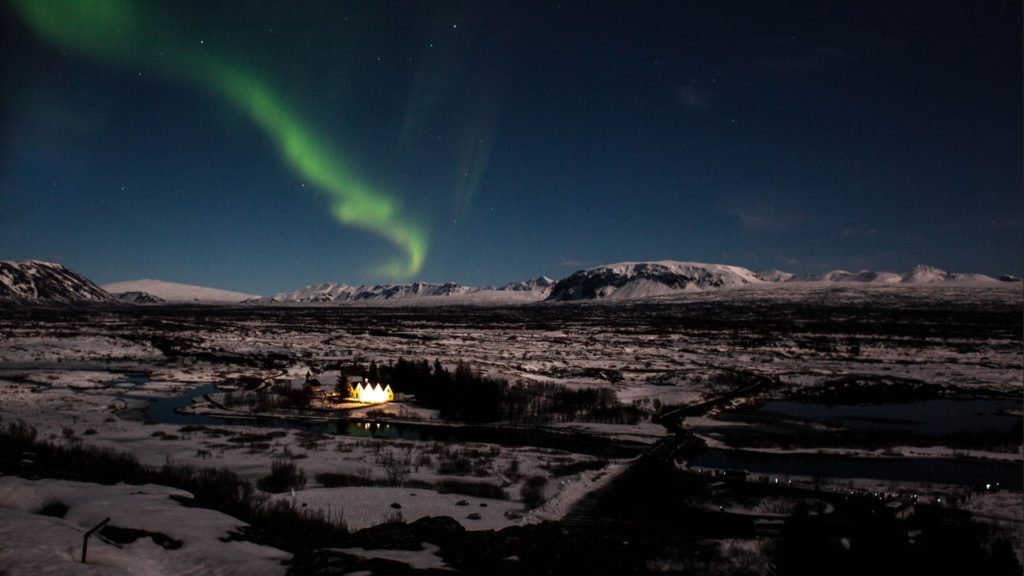
You can see the Northern Lights pretty much anywhere in Iceland, even in Reykjavik with all the light pollution that comes with a city, but some places are particularly picturesque. The lights usually start showing up in the North, but as the intensity increases they can show up anywhere in the country. These are the best spots for an unforgettable experience:
Grótta
Not too much of a trek from the city of Reykjavik, but removed enough to prevent the modest city lights from interfering with your view. Grótta is a bird-watcher’s dream by day and an awesome spot for the Aurora at night.
Öskjuhlið
Find the Perlan building for a top-floor observation deck, complete with spectacular views of Reykjavík and a warmer option for viewing the lights.
þingvellir National Park
Experience the ethereal lights against a backdrop of moss-covered lava rock at þingvellir National Park. Bring a camera.
Ásbyrgi Canyon
Where better to see the Northern Lights than the ‘Shelter of the Gods’. Remote and heartbreakingly beautiful thanks to 100-metre cliff sides and a woodland forest of ash, birch and willow trees. Beauty above and below.
Kerid Crater
A crater that creates an otherworldly experience when the Aurora is reflected in its waters.
How many days do you need in Iceland?
If you want to see the best of Iceland, aim for at least seven to eight days for your trip. It’s a small country that punches way above its weight in what it has to offer travellers. A week gives you a good shot at seeing the Northern Lights in winter, while still giving you time to soak up the vistas, culture and unmissable Icelandic adventures.
What should I see in Iceland?
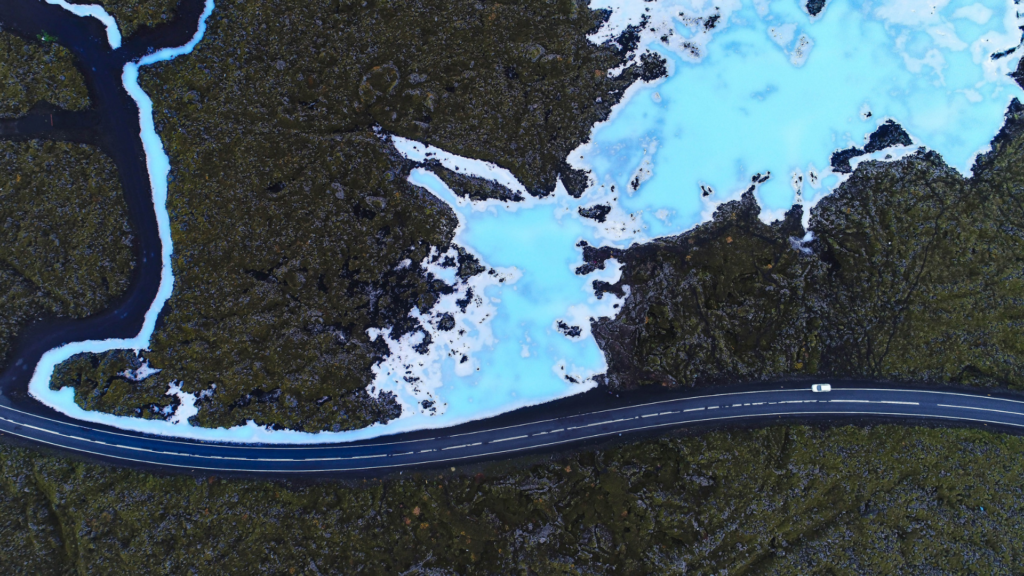
The benefit of a small country is you don’t have to cover great distances to soak up all the best places to visit in Iceland:
Soak in the Blue Lagoon
Naturally high levels of silicates and minerals mean you’ll be able to warm your bones and rejuvenate your skin in one go.
Geysers
Liquid illustrations of Iceland’s volcanic landscape, they’ve been spewing out magma heated water for the last 10,000 years.
Gullfoss waterfall
Glacial water cascades 32 metres and over two tiers in a dramatic display of raw natural power.
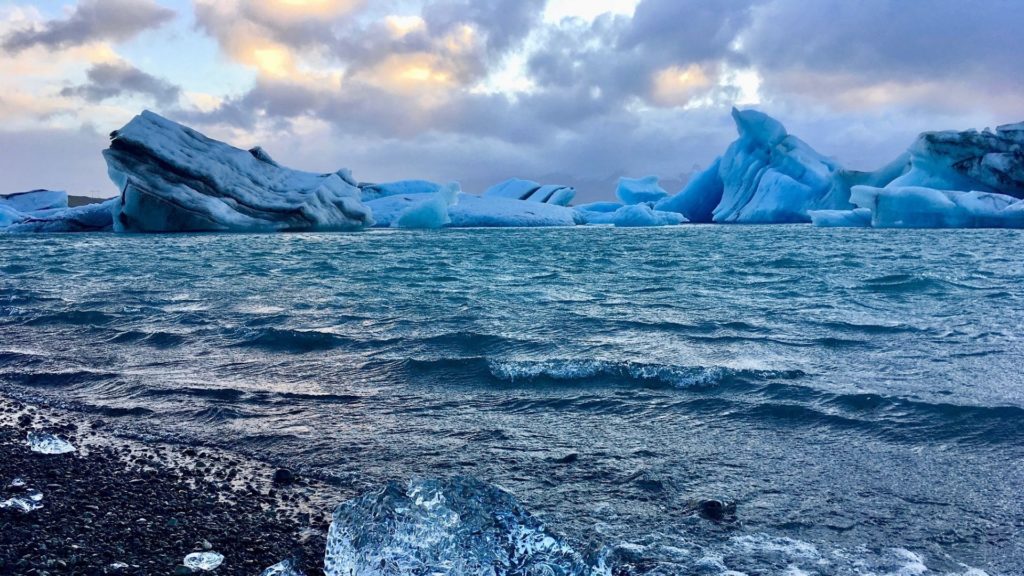
Jokulsarlon Glacier Lagoon
Summer boat tours take you through huge icebergs on the lagoon, but if you visit in winter the winter wonderland of the Vatnajökull Ice Caves is left unveiled, ready for you to explore.
Snaefellsnes Peninsula
This peninsula is Iceland in miniature. If you’re short on time, but want to pack in all the natural wonders, head here. You can see a huge array in just a day, plus it has seals. Lots of seals.
Skaftafell Nature Reserve
Nature at its most spectacular. A great black desert, sliced by powerful rivers that envelops a peaceful birch wood.
Do I need a visa to visit Iceland?
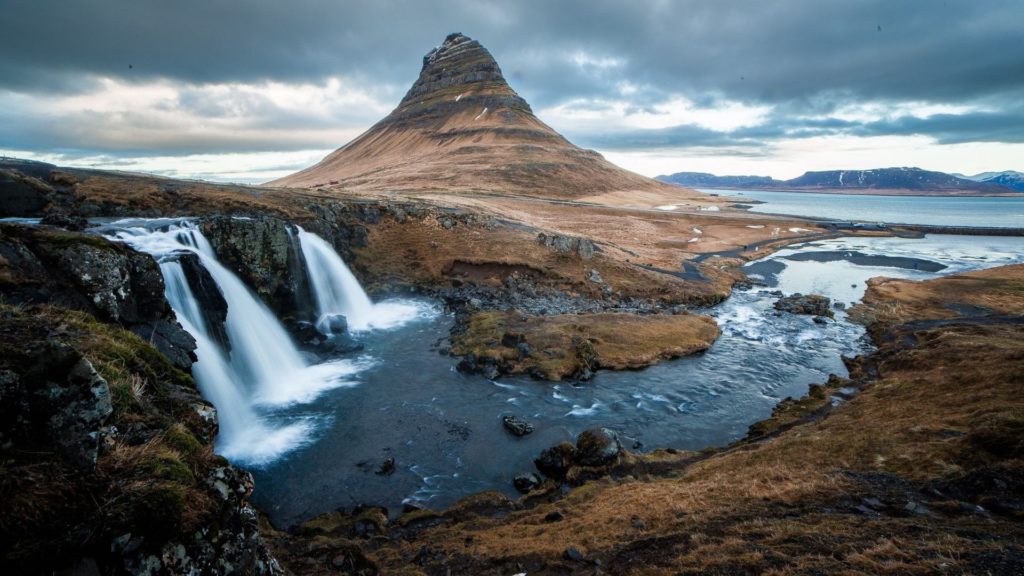
From the UK:
If you’re a National of the European Economic Area, then no visa is needed. If you have a valid passport, get packing.
From the US:
Outside of the EEA, your passport needs to be valid for at least 90 days past your intended date of departure. So if you’re travelling from the US, for example, no visa is needed. Just a passport with more than three months validity after your intended date of departure from Iceland.
For glacial hiking, Northern Lights sightings, wilderness yurts and more, check out Flash Pack’s action-packed repertoire of Icelandic trips
Photos: Joshua Earle, Trevor Cole, Andrey Andreyev, Vladimir Riabinin, Mahkeo, Nicolas J Leclercq, Kym Ellis, Agnieszka Mordaunt, Martin Jernberg, Balazs Busznyak, Jonatan Pie on Unsplash

